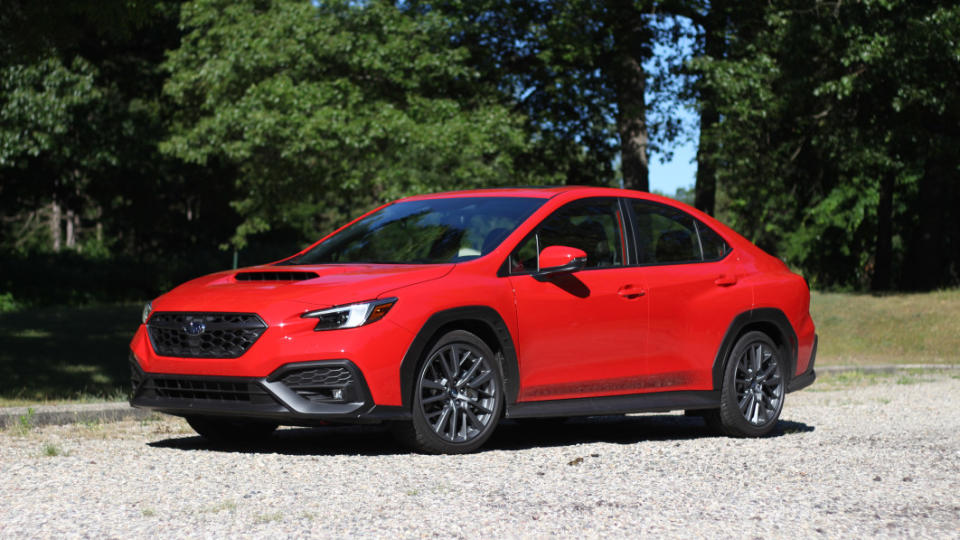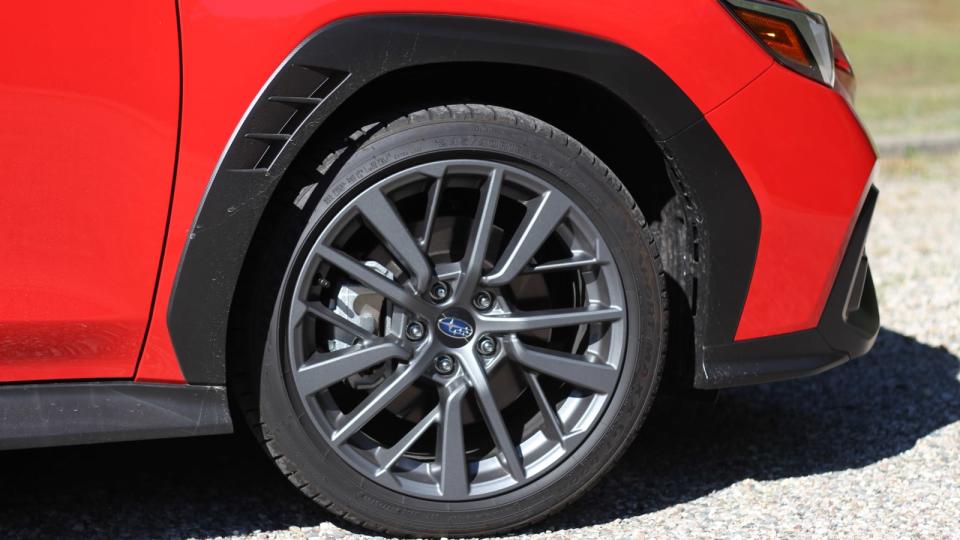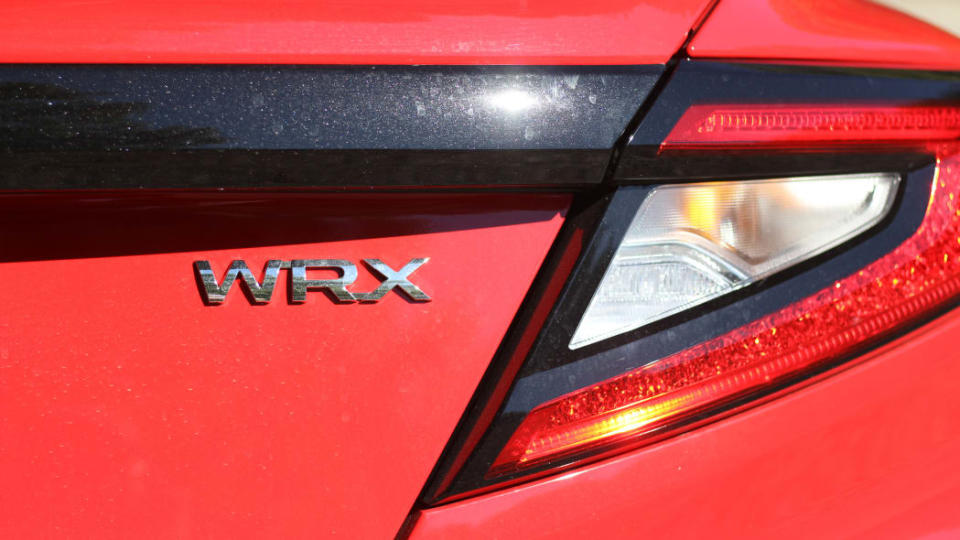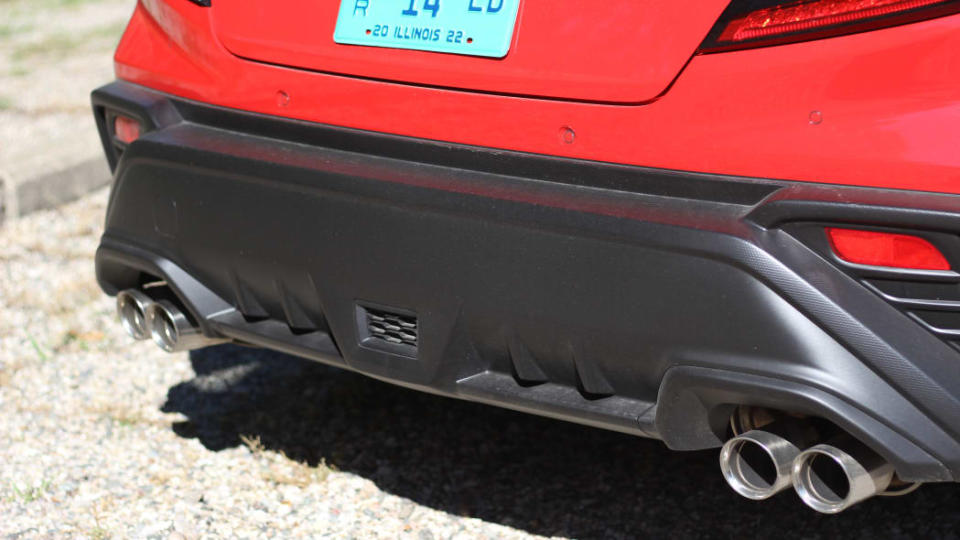2022 Subaru WRX GT Road Test | Variable expectations

The redesigned 2022 Subaru WRX family looks a bit different from years prior. With the STI now DOA and this new GT model topping the range, you’d be forgiven for seeing this transformation as an about-face for a nameplate that grew an international following based on its motorsports forays. But despite the GT’s more luxurious pretensions, it brings some performance features to the WRX family for the first time, meriting evaluation even if its transmission — a CVT by another name — does little to rouse our interest.
We’ve covered the standard WRX pretty extensively, so if you’re curious as to how Subaru’s sport compact performs sans CVT, adaptive suspension and upgraded infotainment, check out our earlier first drive and road test. Spoiler alert: The manual WRX is pretty damn good.
But on to the GT. As we hinted at above, this model takes the WRX formula and adds tech. A multi-mode adaptive suspension replaces the fixed steel coils and dampers of the WRX, allowing drivers to dial in their preferred ride. The WRX’s standard front buckets are replaced by some deeply scalloped and shapely Recaro sport seats. The infotainment system is upgraded from the weird, stacked double-screen setup to a single portrait-style screen, while Subaru’s Eyesight safety suite is added thanks to that standard automatic. Subaru hasn’t bothered to make it all work with the manual. There are also some GT-specific visual elements, which you can see in the detail shots we included here.
As for that standard automatic, it’s mandatory and yes, it’s a CVT. Subaru would rather we use its marketing term for it, which is “SPT” for “Subaru Performance Transmission.” Take that how you will. Like all modern performance automatics, the CVT’s programming is tied to the GT’s drive modes. Subaru offers eight fixed ratios and says the “shifts” between them are every bit as quick as those of a dual-clutch automatic. Dial it back to something more sedate, and it’ll perform like any other Subaru CVT — for better or for worse.



Fire it up, and you’ll immediately notice the GT’s subdued exhaust note. It’s obvious Subaru had to work around the NVH constraints of the CVT SPT and its engineers did a marvelous job of containing the not-so-desirable low-frequency noise often associated with rubber-band transmissions. On the flip side, it’s quiet. GT-quiet? Perhaps. Whatever it is, it’s definitely not STI-loud. Mentally setting that aside, I took the GT out for a long drive around the Detroit ‘burbs to see exactly what it could do that the standard WRX couldn’t. If the GT is going to make sense anywhere, it’s here on the cratered streets ringing Michigan’s crumbling metropolis.
In its softer modes, the adaptive suspension performs admirably. In fact, just puttering around on surface streets, the GT does a convincing impression of a bog-standard Impreza. Dial it over to its sportiest setting and it becomes a bit flinty, but still largely tolerable. It’s much more at home in the curves — preferably on fresh, smooth pavement, but it’s not overly upset by normal imperfections. But the same can be said of the standard WRX's suspension. Like its RWD cousin, the BRZ, it's remarkably comfortable. The GT boasts more granularity of selection, sure, but the base suspension is a textbook example of a perfect compromise delivered straight from the factory.
If I'm lukewarm on the suspension, I'm chilly on the transmission. Around town, the powertrain moans distantly and responds adequately. Get it out on an empty back road and crank the drive mode over to something sporty and the CVT SPT will dutifully turn up the wick, keeping you high in the rev range. Subaru even gives you paddle shifters so you can play along with the fake “gearing” if you’re so inclined, but absent a situation where fine control is necessary, they're strictly unnecessary. If you're like me and you find yourself utilizing such things regularly, they're handy for keeping the revs under control in sportier drive modes, but adjusting the individual drive mode configuration will fix that just as well — and as permanently as you like.

 Yahoo Autos
Yahoo Autos 
